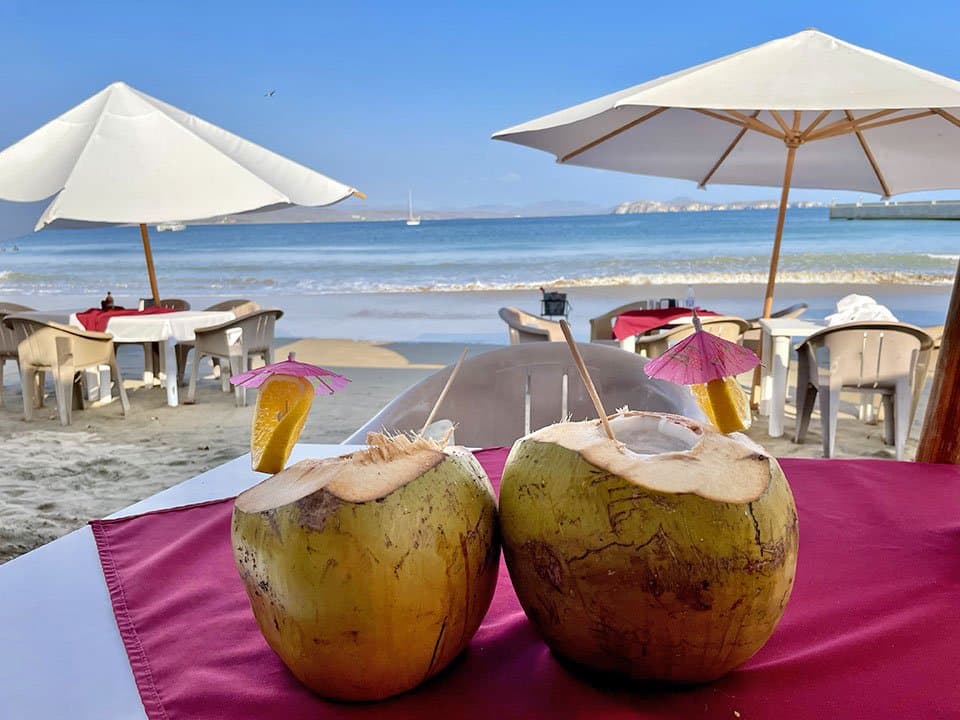
Cruising Costalegre
Costalegre translates as the “Cheerful Coast” and is a series of beaches, capes, and bays of various sizes sprinkled along the Pacific coast of Mexico, between Puerto Vallarta, in the state of Jalisco, and Manzanillo in the state of Colima. On our way south to Barra we had only explored Tenicatita. This time, heading north, we planned to explore a few more coves and anchorages.
After getting Due West all prepped for cruise mode again, saying our final goodbyes to Barra, and finally getting a good weather window to head north (thankfully no more gale-force winds, and smaller swell than there had been in a while, but also not really enough wind to sail) … we headed out from Marina Isla de Navidad at noon on a Thursday, towing our dinghy Aventuras, behind us, headed for Tenicatita three hours away.
Click all gallery images to view larger.
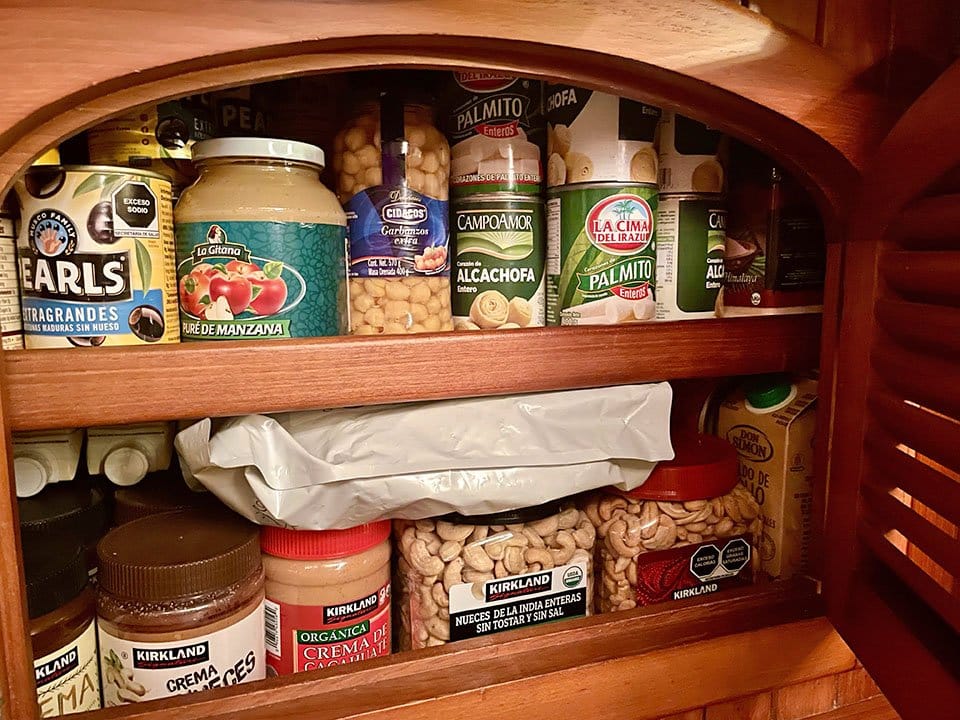

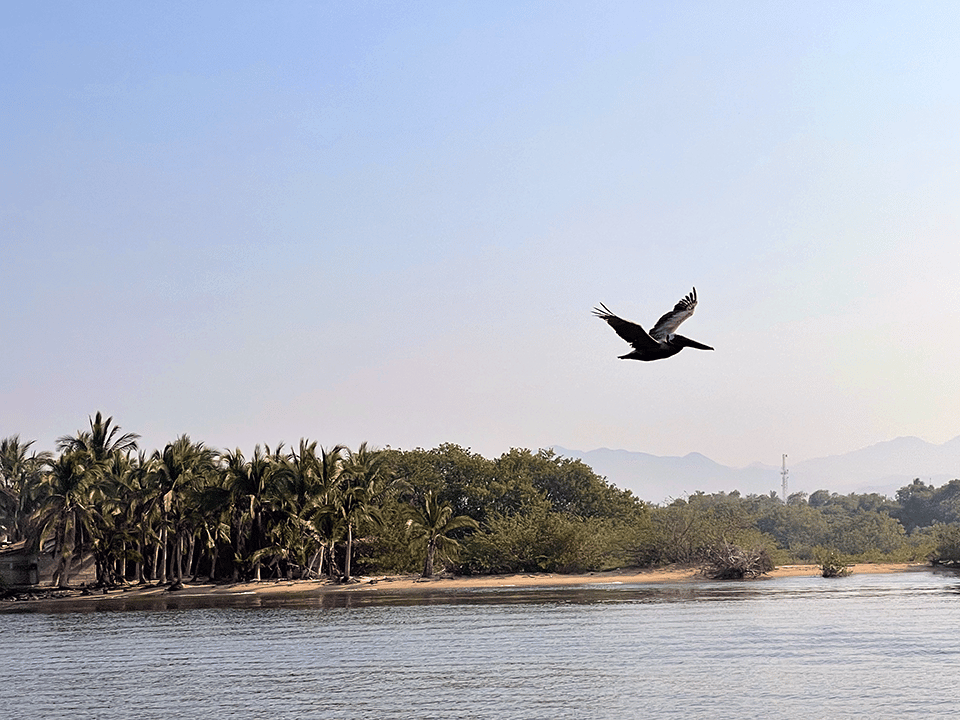
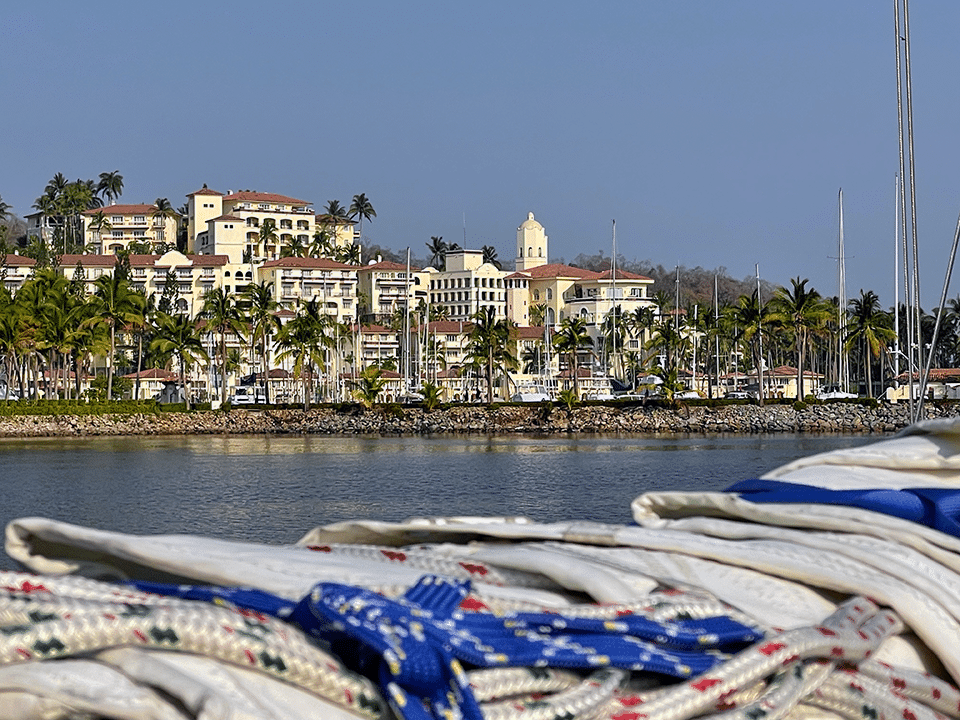
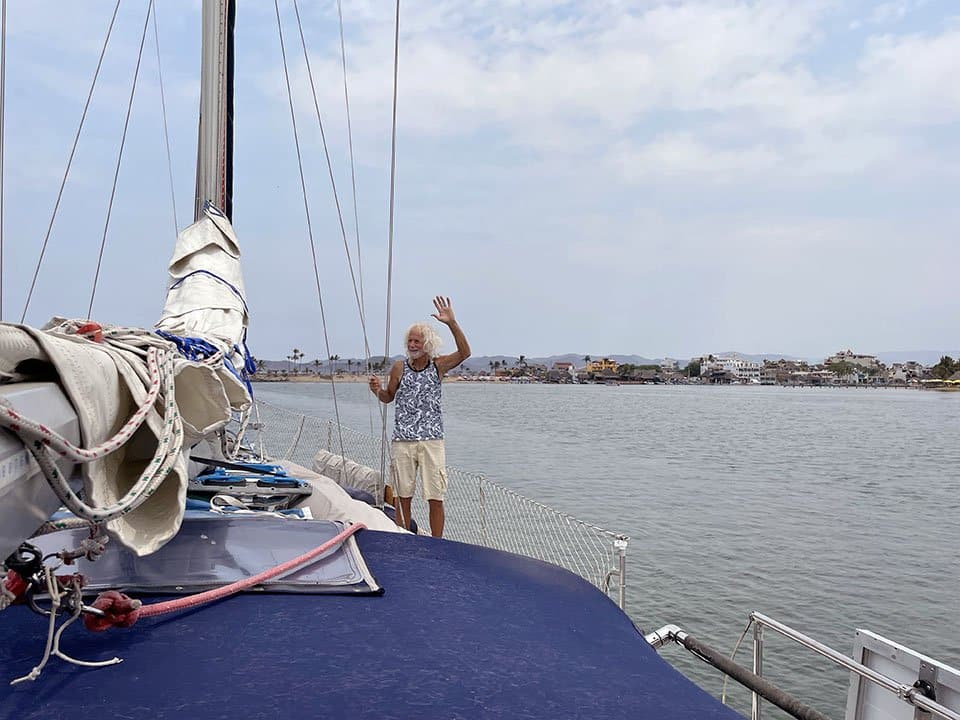
Before leaving, we had a discussion about whether or not to tow the dinghy. Although towing is very common in the Pacific Northwest and in the Caribbean where we’ve chartered, most people in Mexican do not tow their dinghies on passages. We considered advice from our friend Captain Dave Kilmer (author of A Peril to Myself and Others: My Quest to Become a Captain, a great read about his days as a charter boat captain in the Caribbean). Dave is well-aquatinted with cruising the waters of Costalegre, and his advice was to not tow our dinghy. But since we don’t have davits (a hoist/rack system for stowing the dinghy up off the transom) and we would basically be harbor hopping for a week and using our dinghy each day—manually hoisting it up on deck and lashing it down each day, then hoisting it back down again at each anchorage to use it would take a lot of effort. So we decided to go ahead and tow her since conditions were predicted to be calm.
On the way out of Barra, we passed a fisherman in a small panga and gave him a wave… We were motoring because there was not enough wind to sail at that time and the local seas were very confused with waves bouncing off the rocks outside of Melaque, turning our passage towards Tenicatita into a virtual washing machine. Ugh, no fun! Grateful for the Bonnine we had given Tosh & Tikka, they were fast asleep.
About 45 minutes after we left Barra Kirk looked behind us and said “Oh my god! Where is the dinghy?!?” Aventuras was no longer attached. A huge sense of dread filled both of us, as our dinghy is really our “car”, and the outboard was on it as well. Without a dinghy, it can be hard to get ashore (although thankfully we have kayaks as a backup). But we did not like the thought of losing our car and our outboard!! Maybe Dave was right?!
We grabbed the binoculars and started scanning the gray, confused sees for a gray dinghy, and soon realized it would be nearly impossible for us to spot her. Plus we had no idea where she had slipped away in the last 45 minutes of motoring, which included about 4-5 miles of choppy seas.
A Flicker of Hope…
Kirk thought back to when he had first tied Aventuras down and realized he had been interrupted mid-project… thinking he would return later and resecure the dinghy better. But somehow, that never happened. So he was pretty sure it had slipped away early on, maybe just outside of Barra, since he recalled it had not been well secured at all.
However, we really wanted to make sure it wasn’t drifting south and out to sea. So we immediately called a local Mexican panga guide we know named Rubin. He answered his phone right away, and when we explained our predicament, asking if he could come out in his panga and help us look, his reply was “I wish I could help you but I am up in Canada right now.” Well, THAT was not the answer we expected.
Aventuras Rescued!
Next, we called our Swiss friend Jean-Pierre who was anchored out in his boat, s/v Mambo, in the lagoon, to see if he could possibly come out in his dinghy to help us look. Luckily, while we were talking with Jean-Pierre, we got a text message from friends Tally and Neil on s/v Raven. They had our dinghy tied up by their boat!! We felt so much relief!! A local fisherman, (as it turns out, the guy we had waved at when we left) had found it on his way back in from fishing, and towed it into the marina looking for its owner. Our boat worker friend Pancho had been working near Raven and taken Aventuras from the fisherman, giving him a nice reward of $500 pesos ($25 US), and then asked Tally to message us, as he had tried to call us but got no answer—we were on the phone to Jean-Pierre!
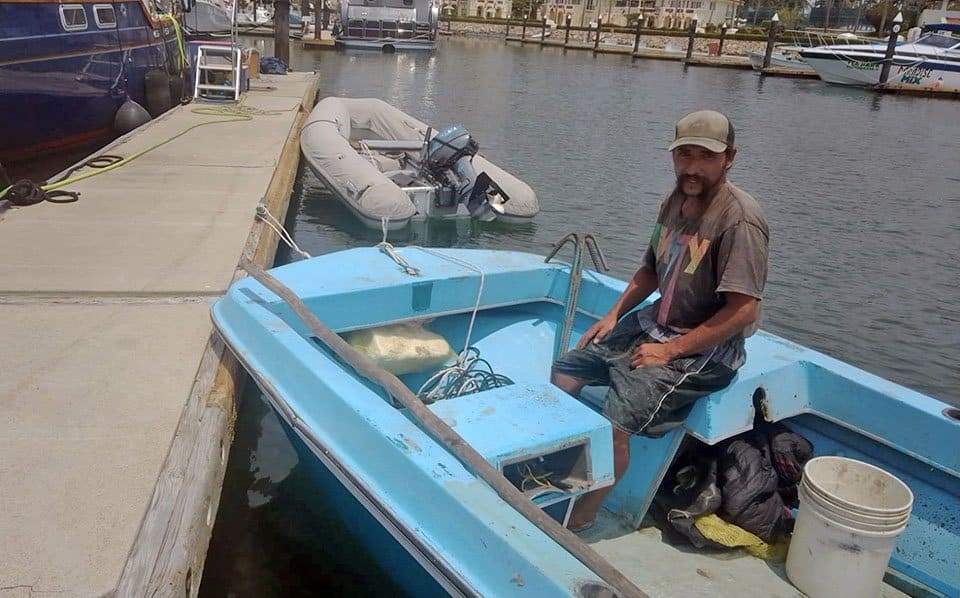
Not wanting to come all the way back into the marina and tie up to get our dinghy, we asked Jean-Pierre if he would mind towing it out to us at the entrance of the Harbor, which he did. However by the time we got Aventuras back and WELL secured this time, it was getting later in the day and we decided to stay one more night in Barra, anchored out in the lagoon, and head for Tenicatita early the next morning. Having never anchored in the lagoon, we followed Jean-Pierre back into the anchorage since it’s very shallow and he knew the route.
A Friendly Fisherman Named “Niño”
Once Due West was securely anchored in the lagoon, we hopped in Aventuras and headed into the marina, first to thank Tally, Neil, and Pancho, and reimburse Pancho for the money he had paid the fisherman. We were SO grateful to have our dinghy back, and won’t make that mistake again! We also got the fisherman‘s name, Estéban or “Niño”, and phone number, and contacted him to see if we could meet up with him somewhere to thank him in person.
Esteban/Niño told us he was in town on the Malecon so we dinghied in to meet him there. After thanking him profusely for finding our dinghy and towing it in, we gave him another $500 pesos. He shook his head no, saying, “Your friend already paid me.” We said we knew that, and we had already reimbursed Pancho. But we were so grateful we wanted him to have more money. He got tears in his eyes… this was probably several days’ worth of fishing income for him—and a small price to pay for getting our “car” back!
We had a nice chat with Niño, and he told us he fished every day in the same spot and sold his catch to the local restaurants. He told us he would pray for a safe journey for us. We thanked him again and told him when we returned next winter we will find him and buy some fish directly from him. He smiled. It turns out Niño had lived some years in the US, and had even taught English… His English was much better than our Spanish.

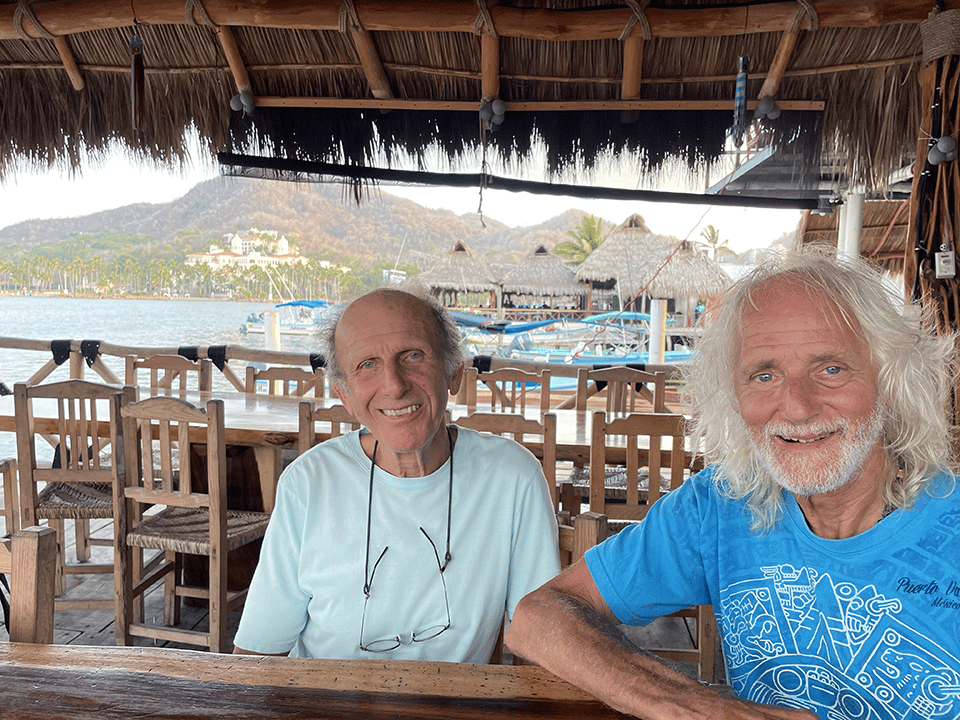
With our new friend and rescuer of dinghies, Estéban a.k.a. “Niño”, and dinner with Jean-Pierre.
That night we took Jean-Pierre out for lobster dinner as a thanks for his help. We went to Ruben‘s family‘s fish restaurant for delicious lobsters, just $300 pesos ($15 US) a piece, what a bargain!
Leaving Barra… Again
The next morning as we headed out to sea again, it was a very hazy, smoky day, with lots of agricultural burning going on. Aventuras was doubly secured and clipped on with a carabiner too. Yes, Dave, we’re still towing her! LOL… We passed Esteban out fishing, waved, and sent him a WhatsApp message of thanks again… and he snapped this photo of us in the haze and texted it back. Nice to have made a new friend on our last day in Barra!
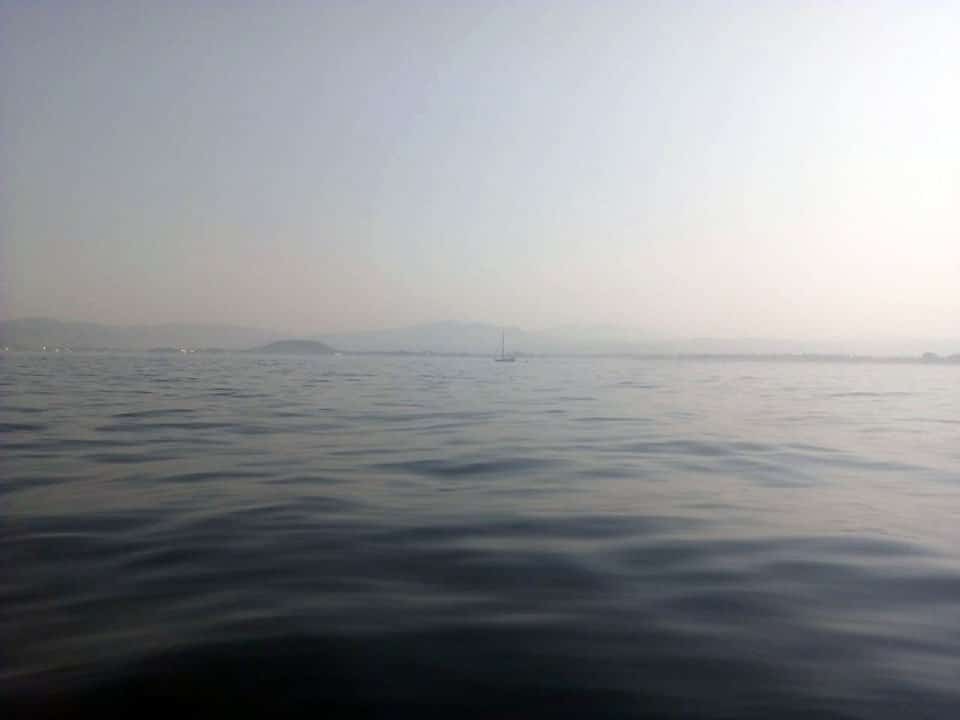
Due West heading due west in the early morning agricultural smoke (we won’t miss that part of Barra!) Photo by Estéban “Niño”.
Tenicatita
After 3 hours of motoring (thankfully the seas were a bit calmer than the day before), we had our hook down in Tenicatita. We were the only boat anchored in this large bay, that only three months ago had 30-50 boats in it!
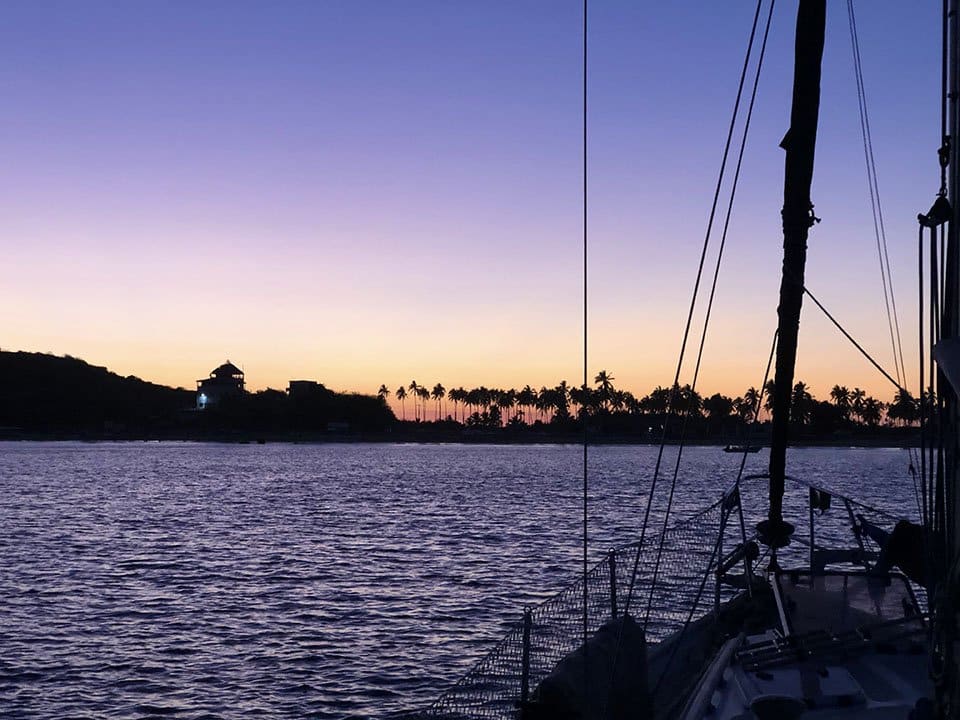
And the bioluminescence in the water that night was unreal. If you’ve ever seen the movie Life of Pi, it was sort of like that! The fish were darting everywhere like green torpedoes and the pelicans were night fishing, coming out of nowhere, dive-bombing the fish with huge splashes that created even more bioluminescence! As we sat out on the foredeck with front row seats to the show, one pelican flew right between the mast and the forestay and cannonballed into the water next to the boat, splashing us! It was truly one of the most incredible things we have ever seen! Who knew pelicans could night fish with bioluminescence helping them out?!?!
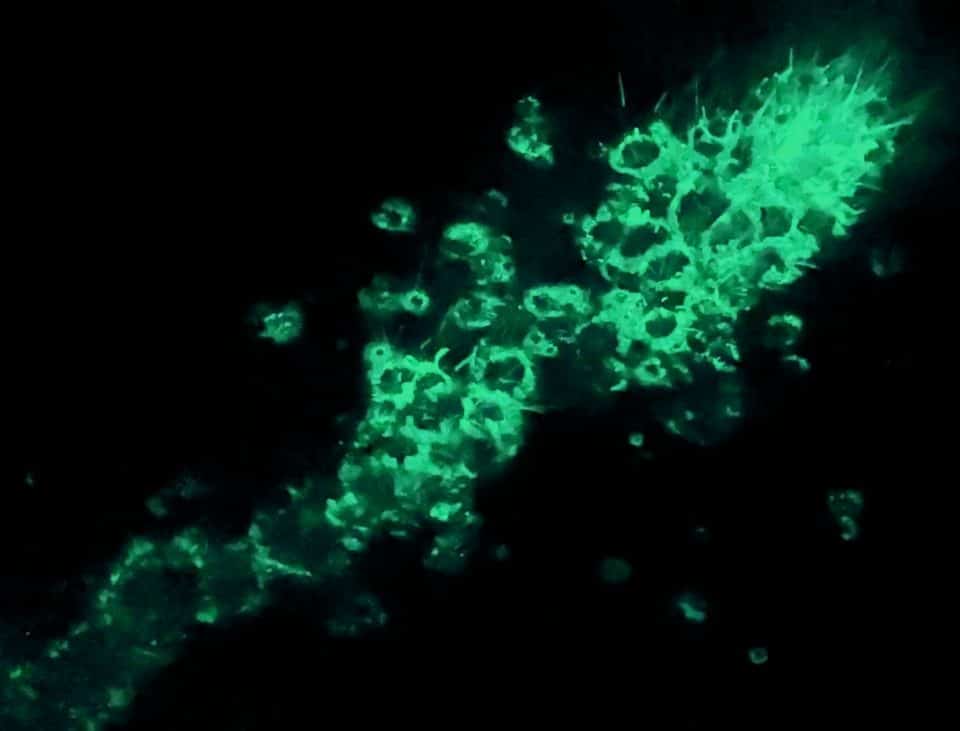
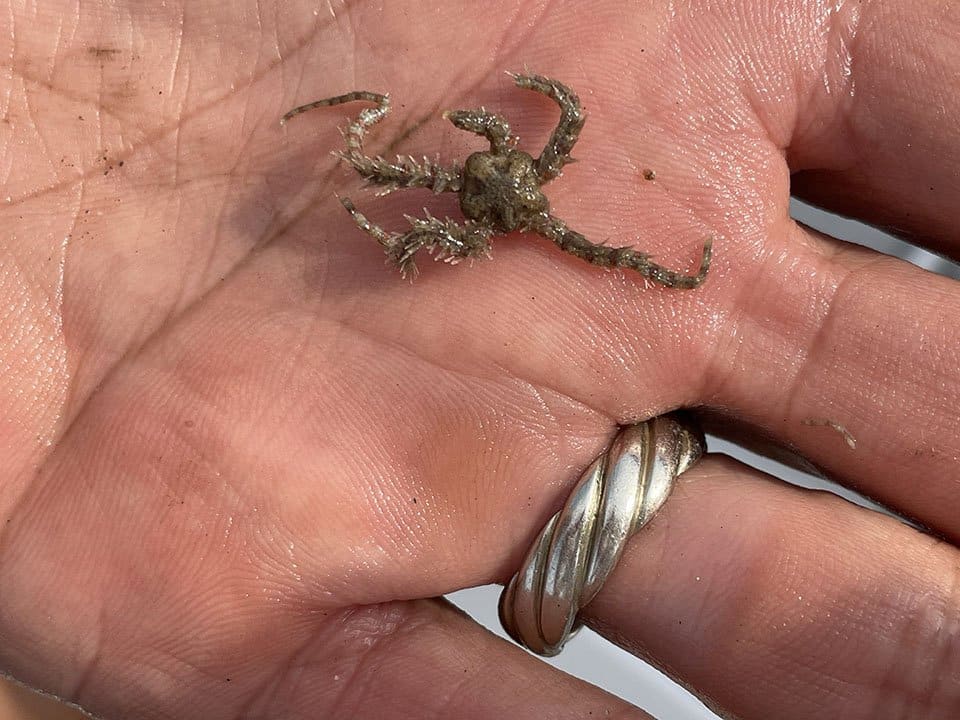
Bioluminescence and a cute little sea star Kirk found on our anchor chain in the morning when he hoisted it up in Tenacatita.
We stayed two nights in Tenicatita, working on boat projects, sleeping, and just chillaxing on the hook (the anchor). The second night, two other catamarans anchored nearby. We never did go to shore, and we’d been up the estuary before with our friends Shane & Lybby, and had seen lots of birds. So we didn’t feel the need to do that again this time. It was so nice to have zero plans and just hang out.
Copa del Sol
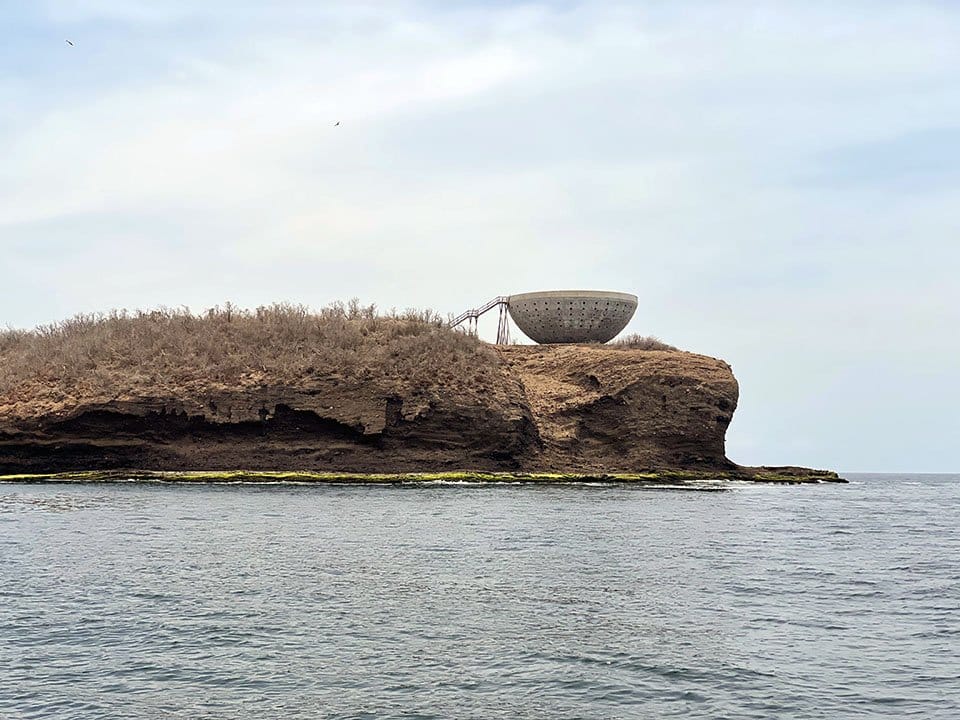
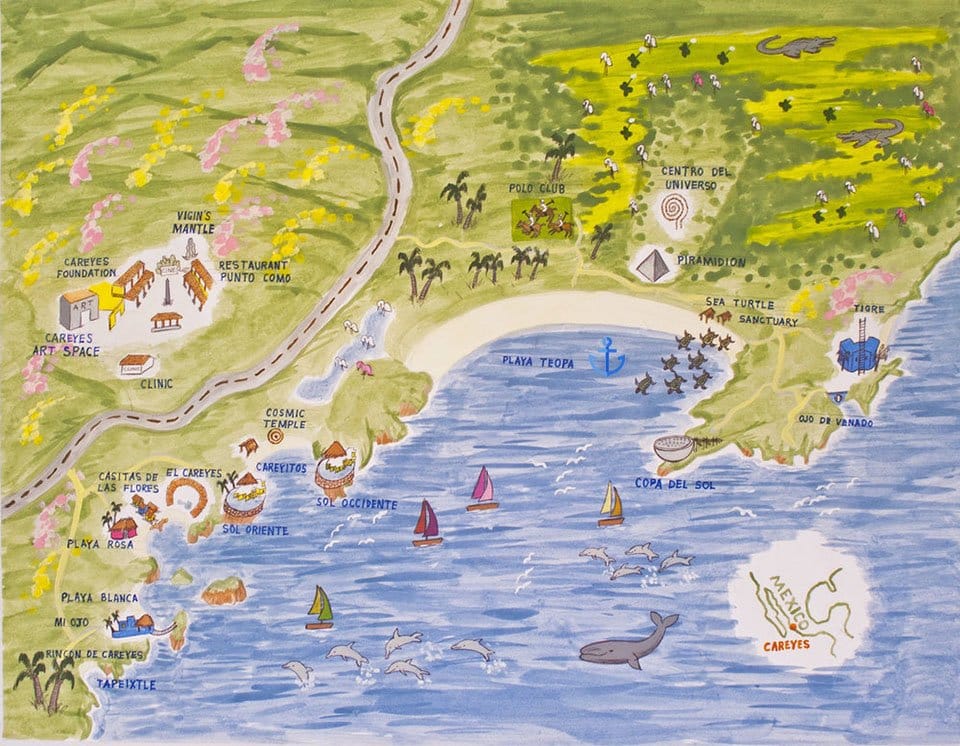
Copa del Sol above, check out the link below to learn more about this interesting art piece! Map courtesy of Careyes, anchor indicates where we’d hoped to stay.
On day three we continued on to Copa del Sol, where we had planned to stay the night anchored in Bahia Teopa, based on a recommendation from our friends Fred & Judy on s/v Wings (thanks!) But the wave action there was no bueno. We hope to return to this beautiful area when the waves/winds are from a more favorable direction.
So we continued on to Plan B, motoring, (still not enough wind to sail) through the gray water and gray clouds, more reminiscent of the Pacific Northwest than Mexico— to Paraíso. This is why we always say our plans are written in sand at low tide! And why our log book has both “Destination” and “Port of Arrival”, they might not be the same place! We did see about 10 sea turtles en route.
Bahia Paraíso
We’re grateful for the excellent cruising guides by Shawn Breeding & Heather Bansmer. We’ve used these books all over Pacific Coast Mexico (along with Charlie’s Charts), and are looking forward to getting the new updated versions soon too. Shawn & Heather personally depth sounded all of the anchorages where they share charts, and we have their electronic charts on our chart plotter too, which is great as you come into a new, unfamiliar bay or anchorage… like Bahia Paraíso was for us on this first-time visit. You can see from the Google Earth photo along with the chartlet, there are a LOT of rocks to avoid in this area. Other cruising guides and charts don’t always call out so much detail. In fact, many Mexican charts are literally centuries old, and so inaccurate that the GPS may show you being a mile or two ON shore from your actual location!



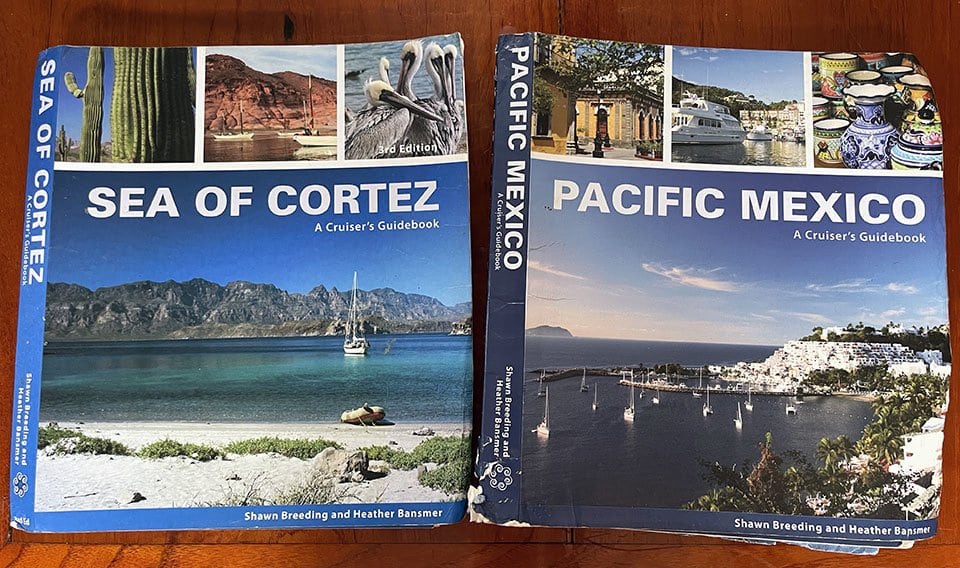
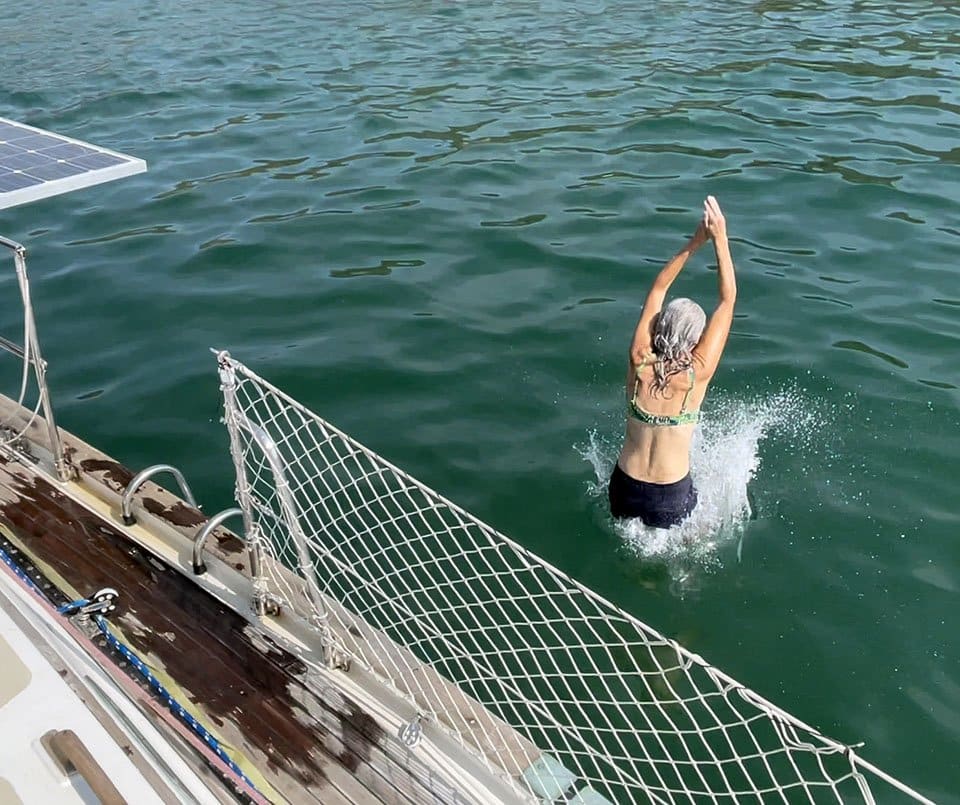
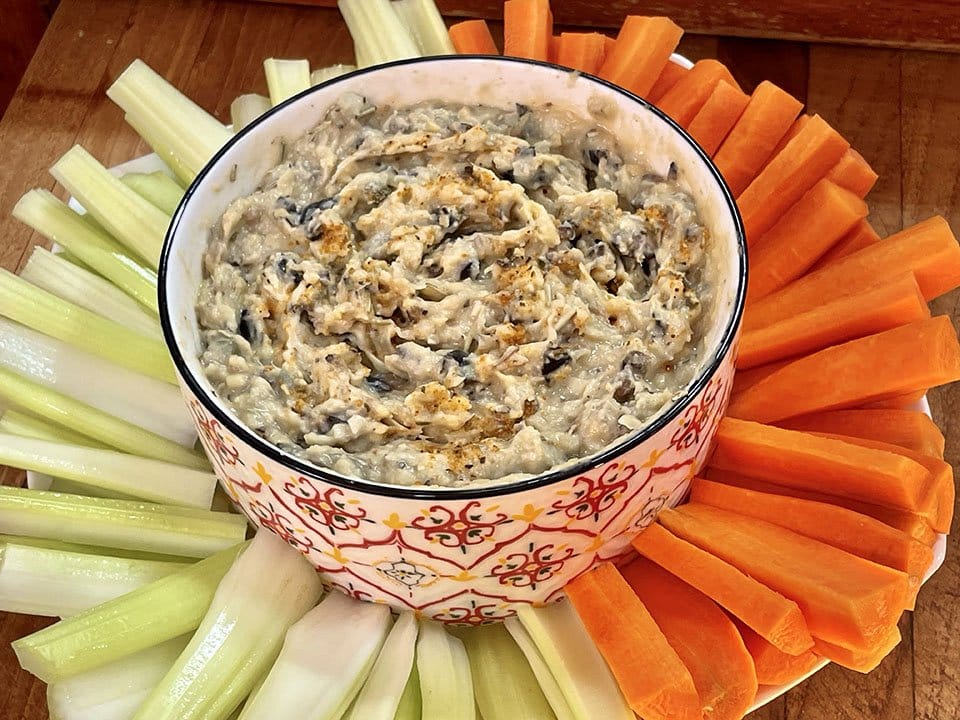

Finally anchored in Paraíso—which was truly Paradise, Heidi jumped right in for a refreshing swim before making some delicious Mediterranean Tapenade. We felt SO lucky to have this paradise to ourselves for three days. We deployed both our flopper stopper and stern anchor to keep our bow into the waves, as the wind wanted to turn Due West sideways to the waves, which is never fun.
Bird Rookeries
While in Paraíso, we dinghied around the wave-drenched, stunning rock islets, full of sea caves, blow-holes, and rookeries of pelicans, boobies, frigate birds, and herons. The snorkeling is rumored to be spectacular here, but as you can see below, the surge and swell were too big to snorkel this time around. Heidi attempted to snorkel once from the boat and quickly made her way back. Kirk asked what was wrong? The water was FREEZING! Well, at least we didn’t have to worry about any hurricane formation this far north (they feed on warm water)… as the first hurricane of the season hit Oaxaca, much further south in late May, and a tropical storm just passed by Barra a week after we arrived in PV. This hurricane season is already hoppin’ EARLY.

After three nights it was time to keep moving north. We didn’t have Wifi most of this trip, and Heidi had a functional medicine group to facilitate on June 6, so we would have to get to PV by then. Our next stop was Perúla in Bahia Chemela, and another rolly motor to get there… so far, our cruising experience in Mexico has been far more motoring than sailing.
Bahia Chemela y Puerto Perúla
We anchored in 25 feet of water over a sand bottom, and the two catamarans who had been in Tenicatita were now here as well. Looks like everyone was making their way north. Our chart plotter Marianne (remember her from waaaay back in earlier blog posts?) had been acting up again. We’d sent her back to Ray Marine once for a lobotomy, but it hadn’t done much good. So in Paraíso we’d taken her apart and cleaned her up with a corrosion-cleaner/dielectric lube to improve conductivity. But it hadn’t done much good either.
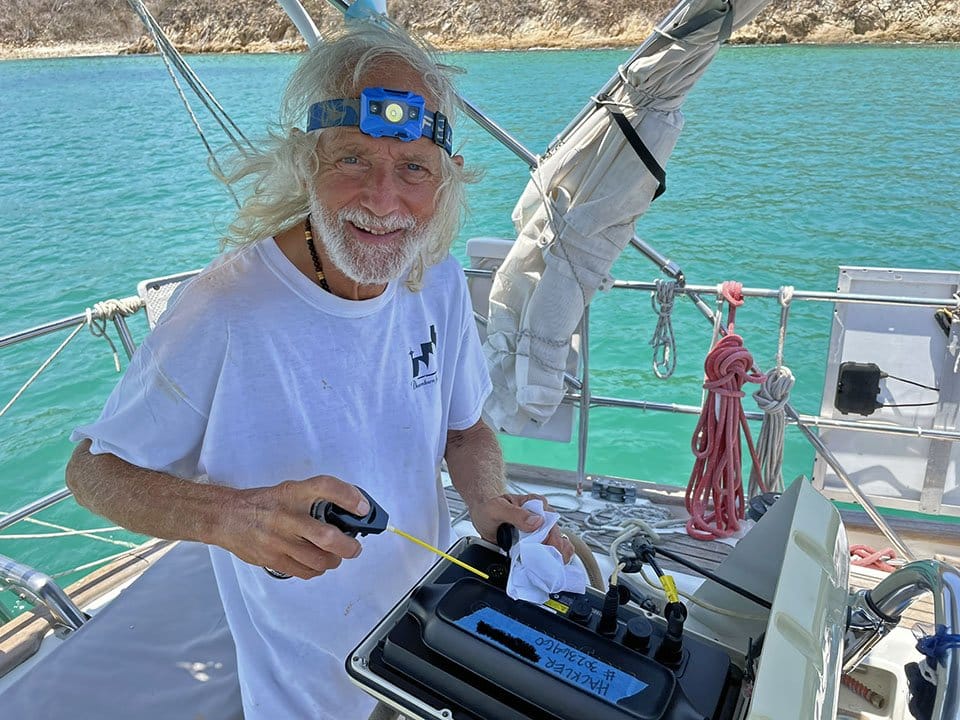

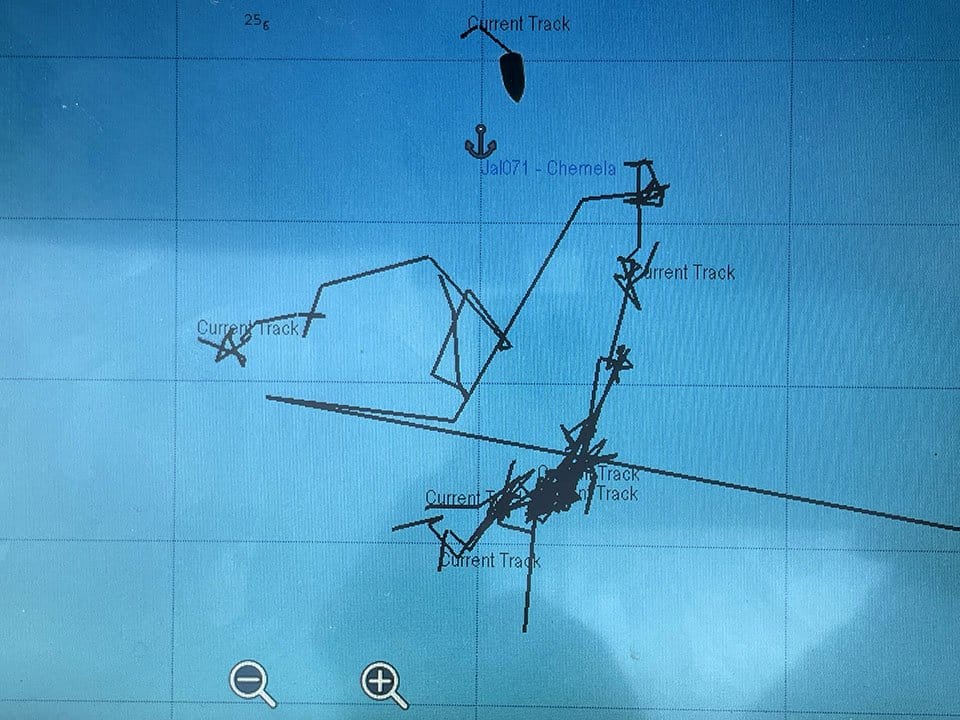
Now, anchored in Perúla, and watching our track on Marianne, it would appear that we were dragging anchor! She had us moving ALL OVER the bay, and yet when we looked at the shoreline and the two other boats anchored nearby, we’re not moving at all in relation to them… uh oh!
Do we trust our instruments or trust our eyes? It was a fitful night’s sleep, between the rollies (we didn’t set up stern anchor or flopper stopper here), and getting up frequently in the night to check our position on Marriane, then check our bearing to the shoreline and other boats again with our awesome Fuji binoculars that let in so much light at night (THANKS for that wedding present Mom & Pete, still getting great use out of them almost 30 years later!)
We didn’t “think” we were dragging anchor… and our Rocna anchor has never dragged on us yet, but that’s not to say it couldn’t happen… Thankfully, morning finally arrived and we were really sure we had NOT dragged anchor, no matter WHAT Marriane indicated.
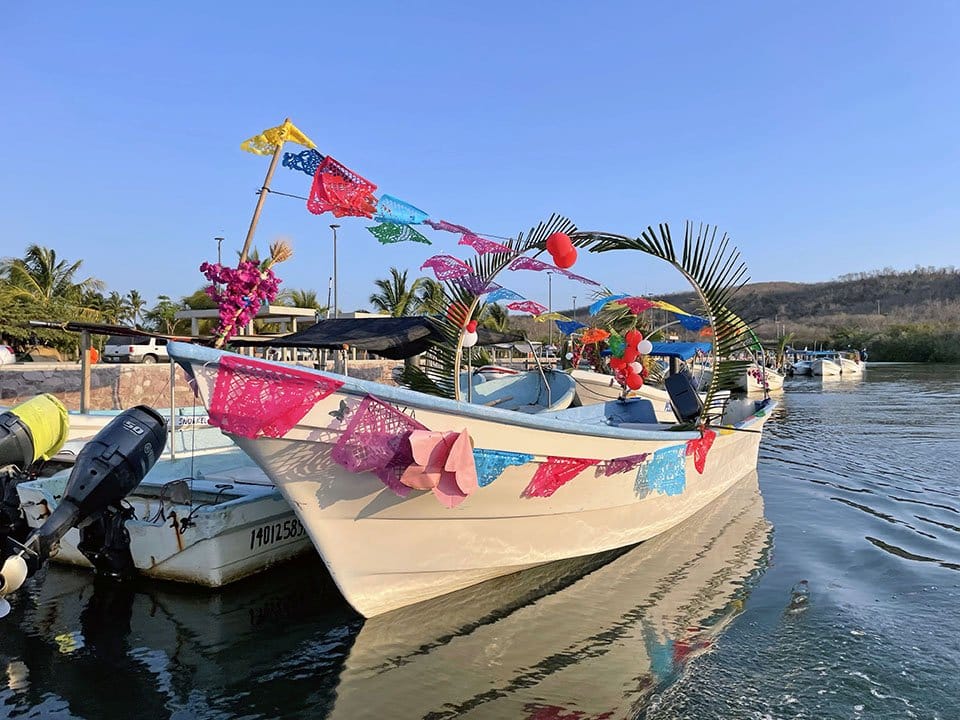
Assured that we were safely anchored, we dinghied up the river to the new panga docks that had been recently built for the fishermen. It turns out it was the anniversary of the panga dock opening (not sure how many years, but it’s pretty new), and the pangas were decorated to the nines, with a big fiesta and mariachi band playing. We asked where we could tie up, and a couple of fishermen showed us a spot. And we walked through town to check it out.










Water delivery tractor, building-size murals of Freda Kahlo and the Virgin of Guadalupe, and be sure to click the house in the middle to view larger, lovey wall art.
It’s a cute, colorful little town, with mostly sand streets so a bit dusty. We did have a couple of great meals with one of the best beach cafes we’ve experienced in Mexico, and Kirk bought a new pair of sunglasses at one of the tourist “beads and trinkets” shops since his Ray-Bans had a broken hinge.
Overnight Passage to Bahia Banderas
The next day it was time to make our overnight passage to Puerto Vallarta, 100 miles north. Since we average about 6 miles an hour, it should take us somewhere around 16-18 hours depending on seas/currents. And since there are only about 13 hours of daylight these days, and we don’t want to enter into PV in the dark, that means doing an overnight passage. We contemplated going 50 miles up the coast to Ipala/Tehualmixtle, and the rest of the way in daylight. But the ocean swell angle for that anchorage would be wrong and it would make for a rolly, unprotected night. Plus, we both really enjoy night watches.
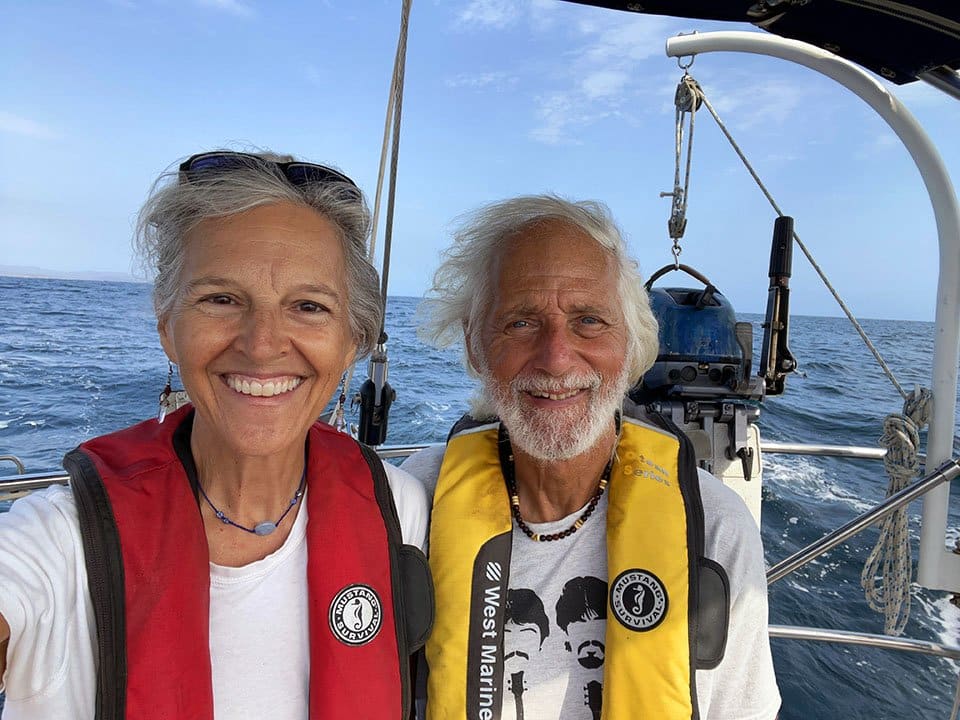
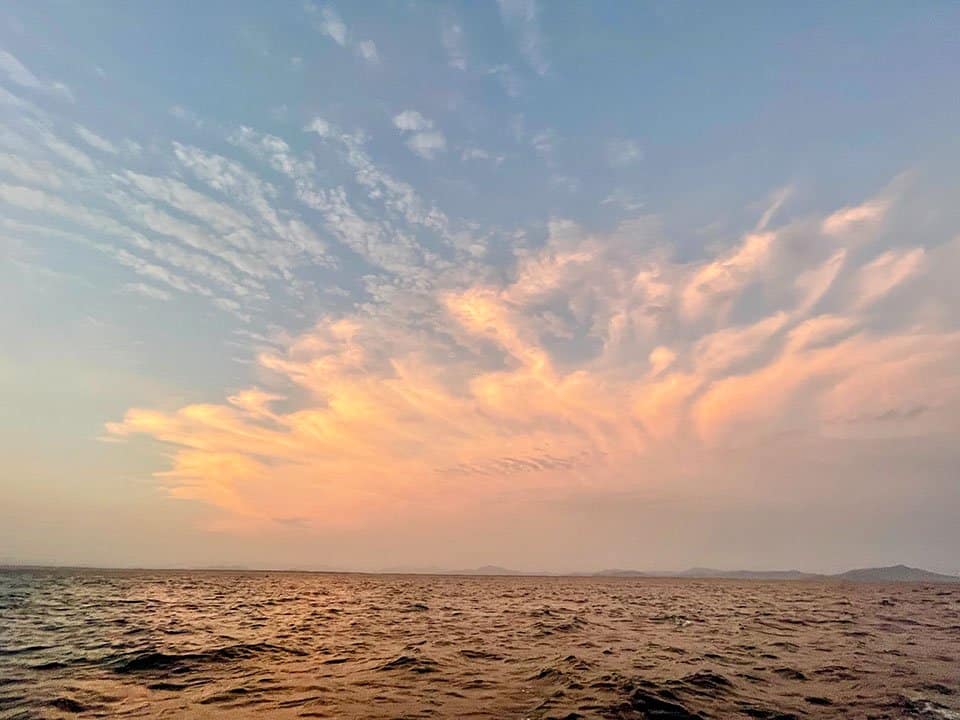

Just before sunset, we had a random sighting of the Mexican Navy towing one of their own vessels. Of course, they didn’t broadcast on AIS, and we were not running our radar to save on power, due to our alternator not working… so we were very glad to pass by them when we could still see them.
We generally do four-hour watch shifts at night, so the off-watch person can get a good chunk of sleep. We’ve found that doing two- or three-hour watches leaves the off-watch person sleep-deprived. On this passage, Heidi took the 8 PM to midnight shift, Kirk the Midnight to 4 AM, and Heidi the 4 AM to 8 AM. We always wear our PFDs (personal flotation devices, a.k.a. life jackets) on passages. Though we always make every decision based on safety first, having someone go overboard is not out of the realm of possibility when sailing. And this is something we aim to avoid at all costs.
So we have two rules for our night watches: Rule #1: the on-watch person is always clipped in with a safety harnes while on watch. Rule #2: no one leaves the cockpit (except to go below) without waking the other person up to be on deck too, and then the person who goes forward and leaves the cockpit, clips into the jack lines (nylon webbing that runs from the cockpit to the foredeck, that safety harness can clip to). Another rule is that we never tow the dinghy at night. So before we started this passage, we hoisted her up on deck and lashed her down to the foredeck.
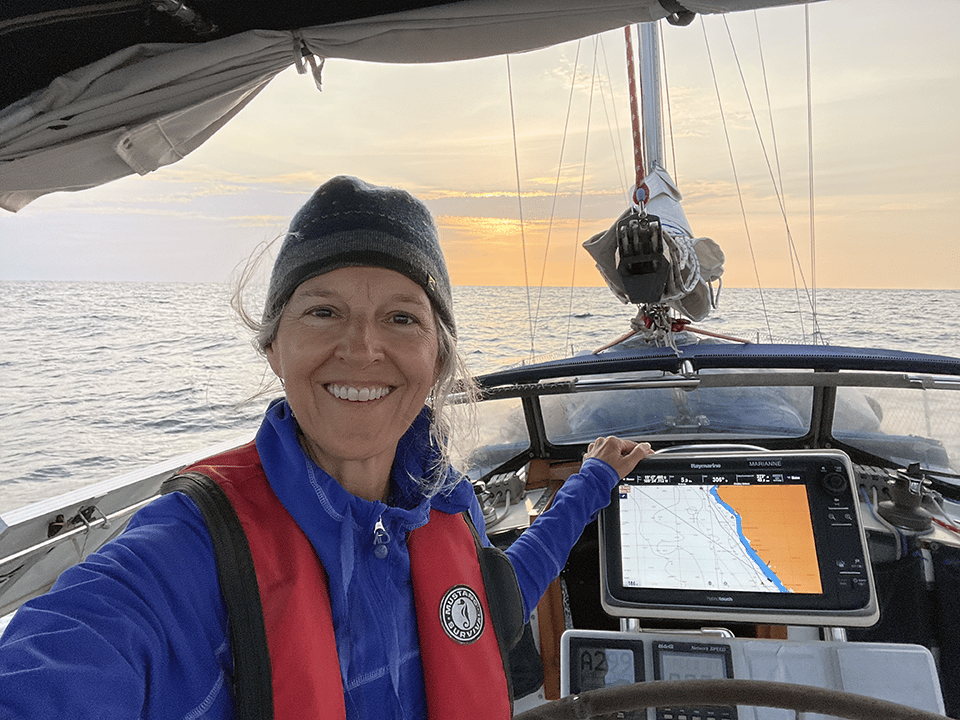
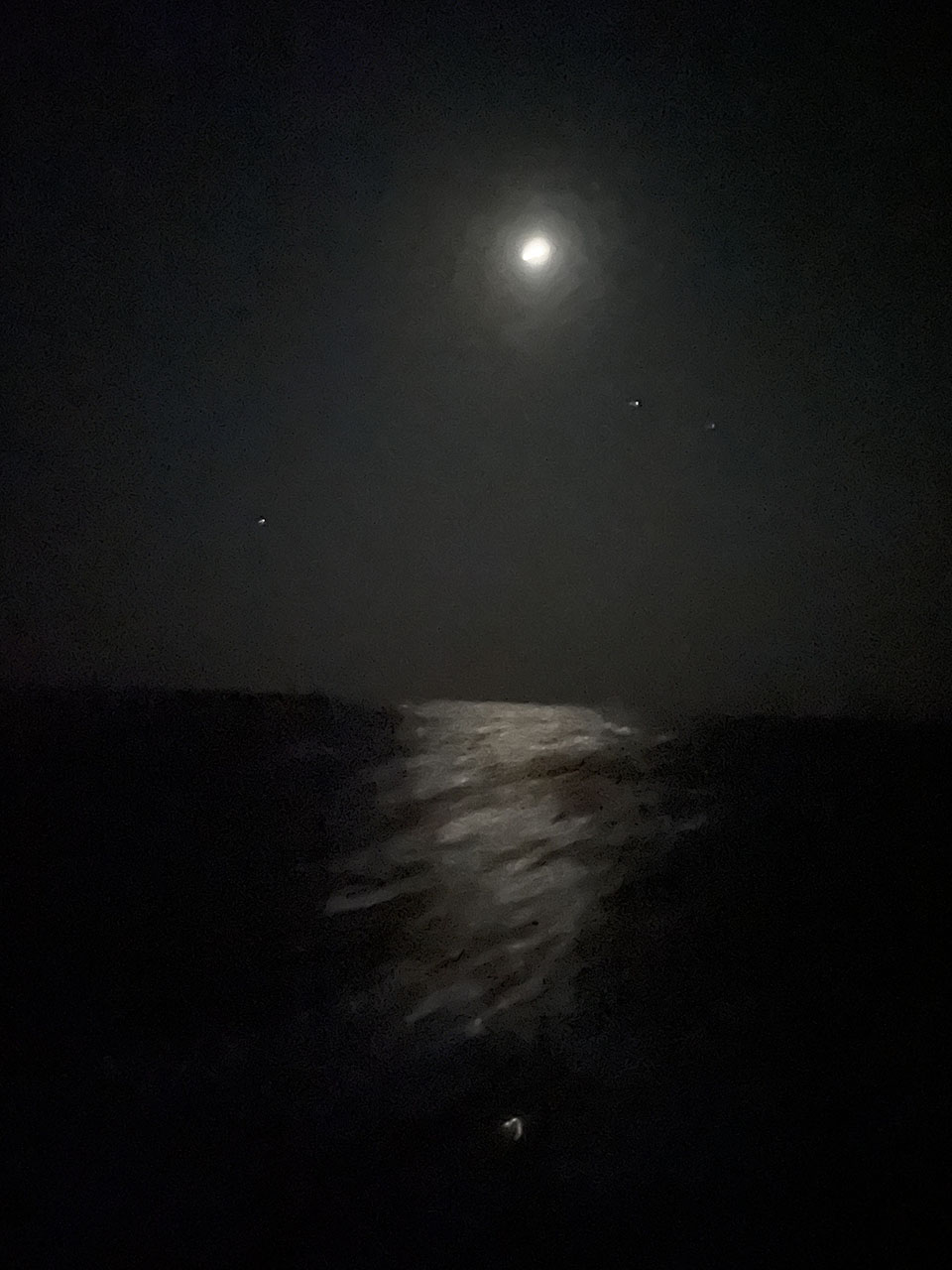
Night watches are usually spectacular and this passage did not disappoint. Sunset, crescent moon, stars, and so much bioluminescence, with “glowing green” fish everywhere…
Non-sailors often ask what we do on our night watches to stay awake! It’s really not too hard, because there is so much to do, and it’s typically so beautiful out. For starters, we scan the chart plotter and then the 360° horizon with binoculars about every 10 to 15 minutes.
On this passage, we were far enough offshore and this is a remote enough area that there was no cell coverage/wifi. So in between scanning the horizon, Heidi spent time cleaning out photos that have accumulated on her phone and reading on her Kindle, while Kirk mostly listened to his eclectic music collection.
We were both totally mesmerized by all the bioluminescence in the water! Although staring at it could actually make you fall asleep, sort of like staring at flames in a fire… so Heidi would typically glance at that when doing her 360 reconnoiters with the binoculars… though Kirk said he could stare at it for hours, no problem.
At the top of every hour, we also write in our logbook, noting our lat/long position, boat speed, motor/sail combination, and other phenology like wind and wave direction, sea state, visibility, sky (eg: stars, cloudy, dark, CAVU, etc.) This was a shorter passage and we could see land the whole way, and are familiar with this coastline so pretty much know where we were along the way.
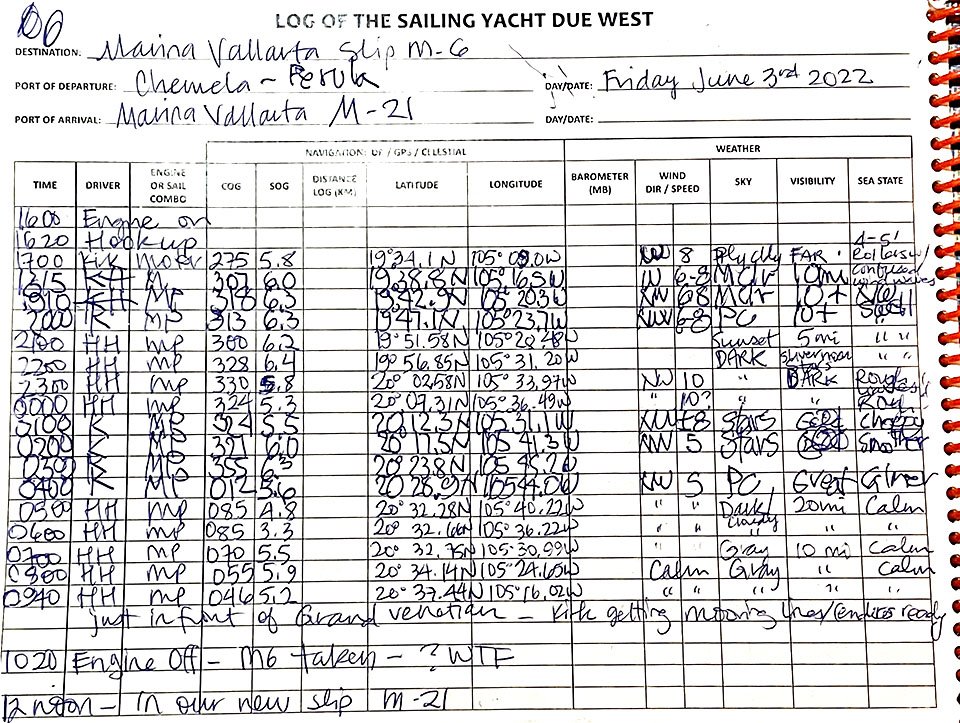
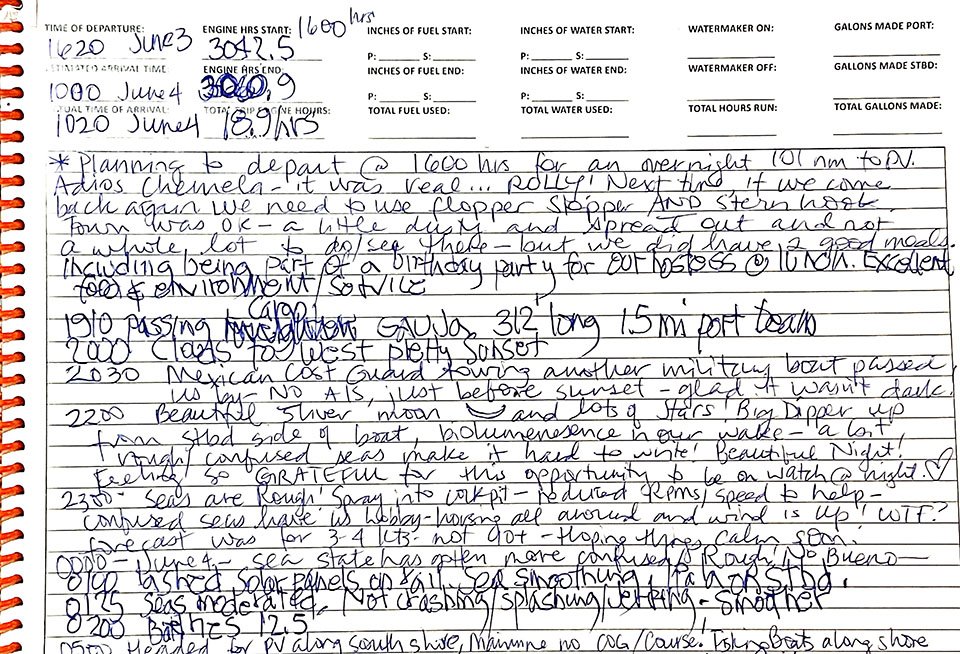
On longer passages or when we are further offshore, we also plot our position on a paper chart every hour, in case our electronic navigation instruments were to go out, we could use dead reckoning to navigate. And honestly, we only had about 50% faith in Marianne (Faithful!) at this point, so we were also running a spare hand-held GPS as backup. Both the chart plotter and the GPS show a track of where you’ve been and pinpoint where you currently are.
And we always have snacks for night watches too, having something to much on can help keep you awake. When we raced to Hawaii in 1996, our night watch snacks included pop tarts and red vines! Yikes, can’t believe we used to eat like that, LOL. This time, Heidi made some super-dupe Salted Chocolate Energy Balls before we started our journey. Never one to follow recipes, (even her own!) she subbed out the oat flour for almond meal and also used 1/2 coconut manna and 1/2 almond butter, so YUMMY!
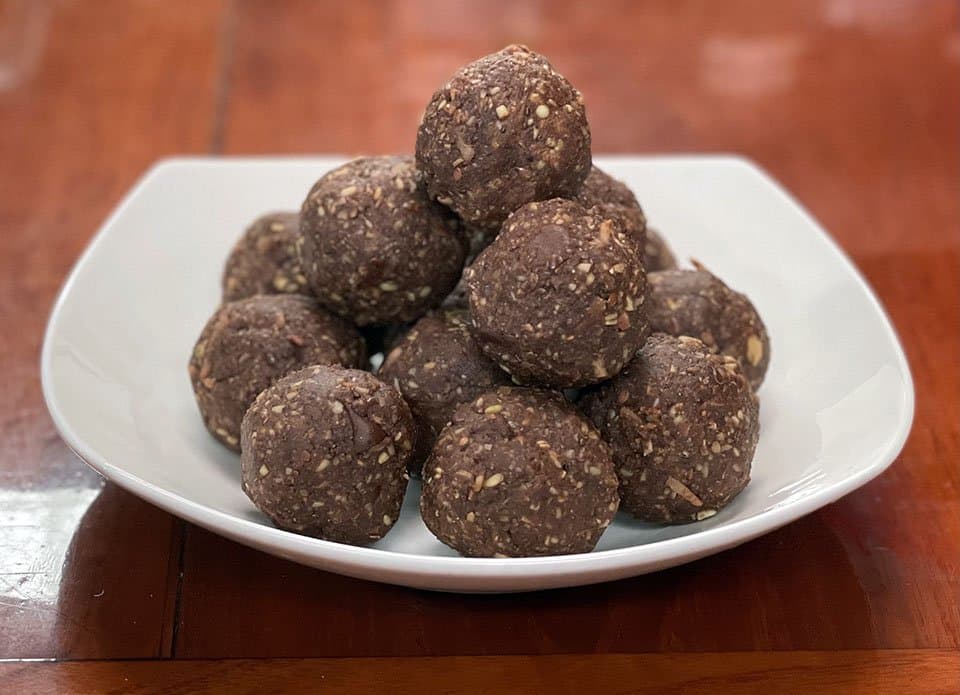
For the first watch, the stars and moon were out and the sky was beautiful, then the clouds filled in and for the second and third watch, other than the amazing bioluminescence, it was quite dark, until it dawned very gray.
At 0600 (still dark) we had to make a quick course change to avoid an eventual collision with another sailboat… crazy that two of us were in the same location at the same time entering Banderas Bay—a giant bay that takes five hours to motor across!!
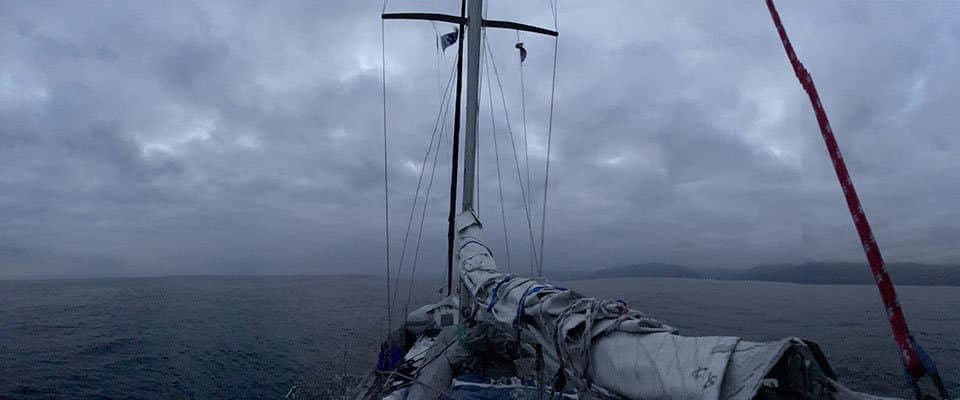
Banderas Bay greeted us with an extremely gray morning… and for a minute wondered if we had made a wrong turn and sailed back to Seattle!?! Then just as we entered the harbor the tourist attraction “Pirate Ship” was leaving, confirming it was actually PV, and we had to dodge it along with 20 other tourist attraction boats, and the Laser World fleet too…
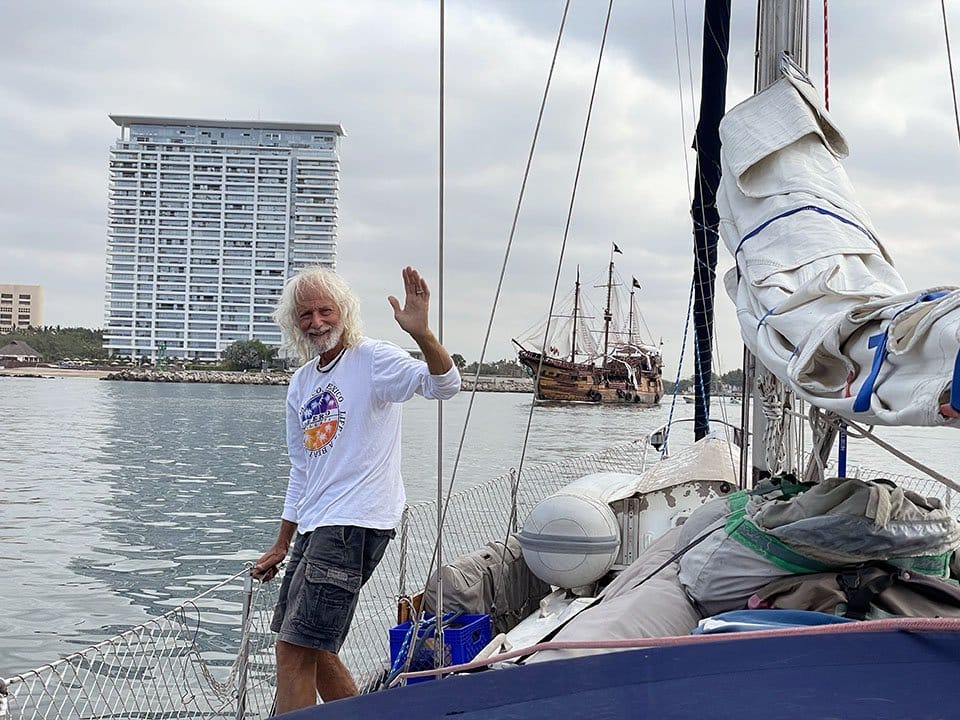
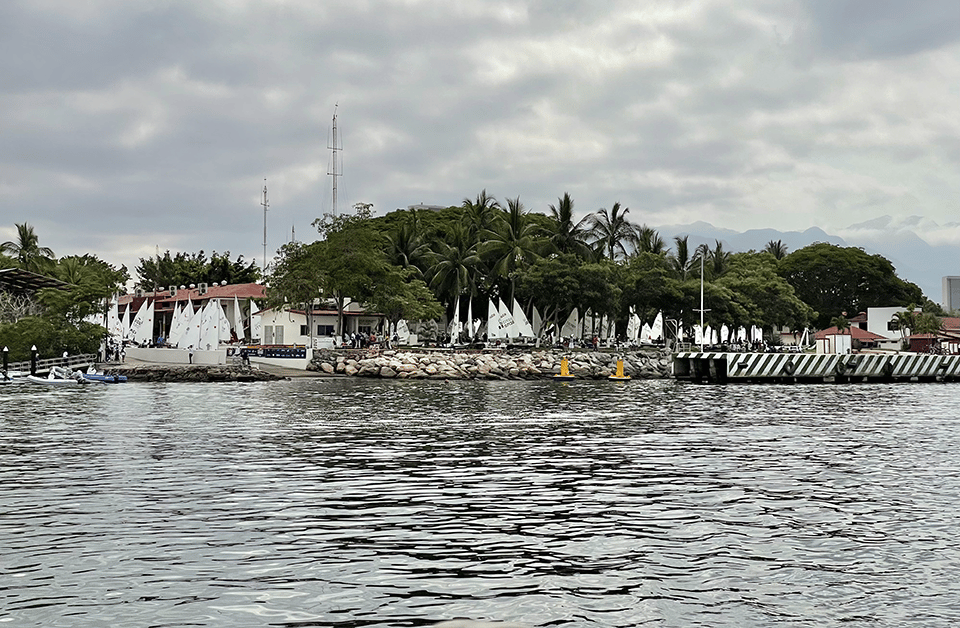
An exciting return to Puerto Vallarta for sure… including the fact that our assigned slip (with emailed confirmation from the marina the previous day) had another boat in it when we arrived—cuz that’s always fun just as you’re trying to land your boat after an all-night passage! However, we actually prefer the new slip we ended up in, so all‘s well that ends well! And Tosh & Tikka are very happy to have the motor off, and no more rolling seas for a while. Two cats-in-hats!
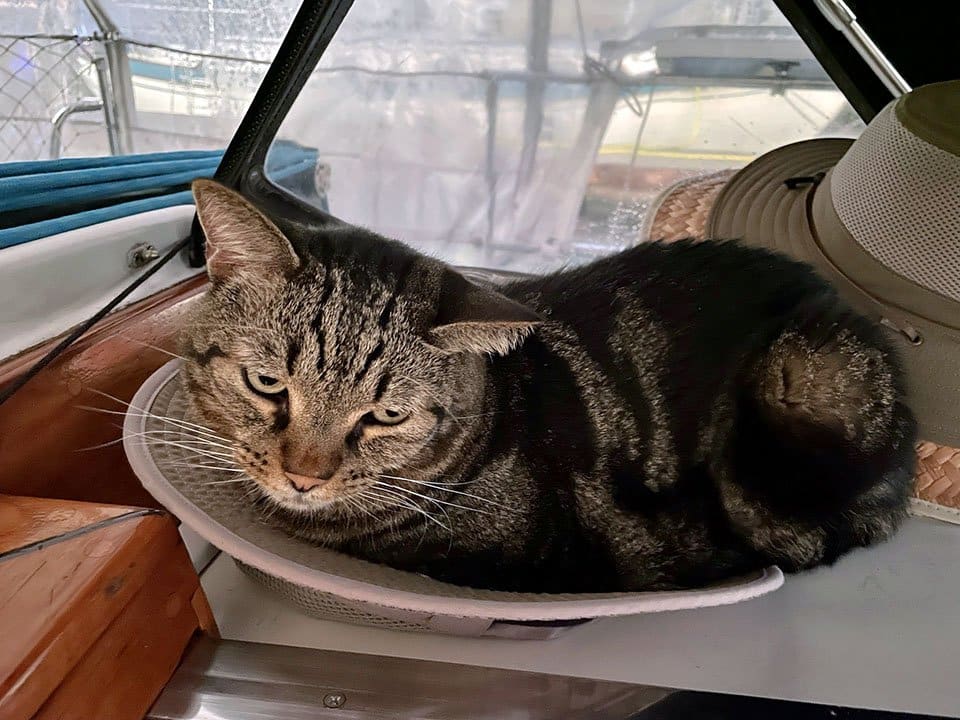
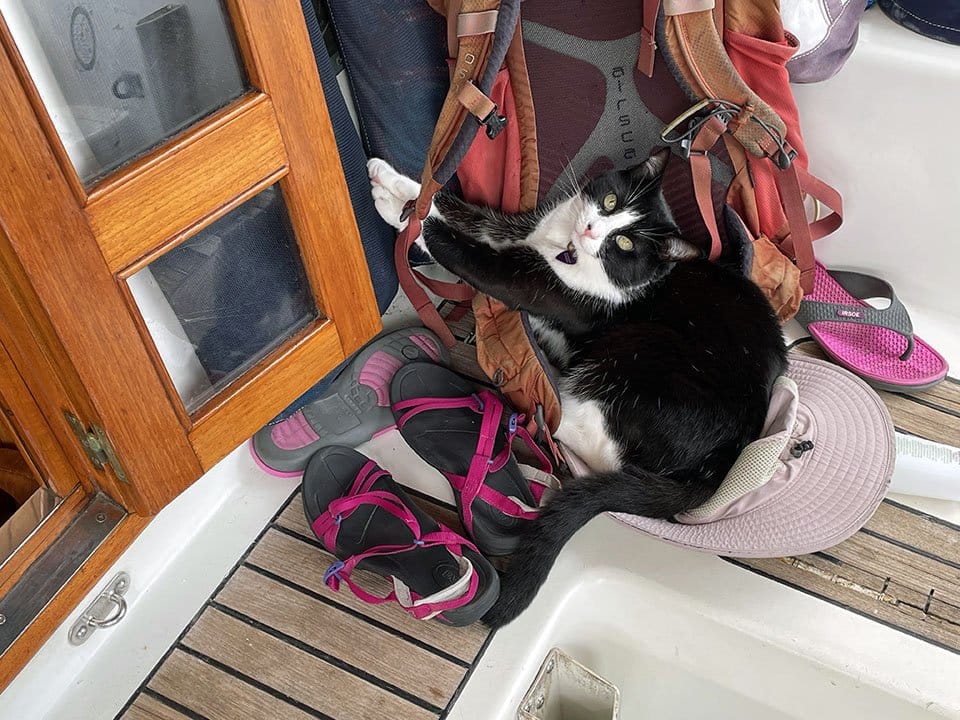
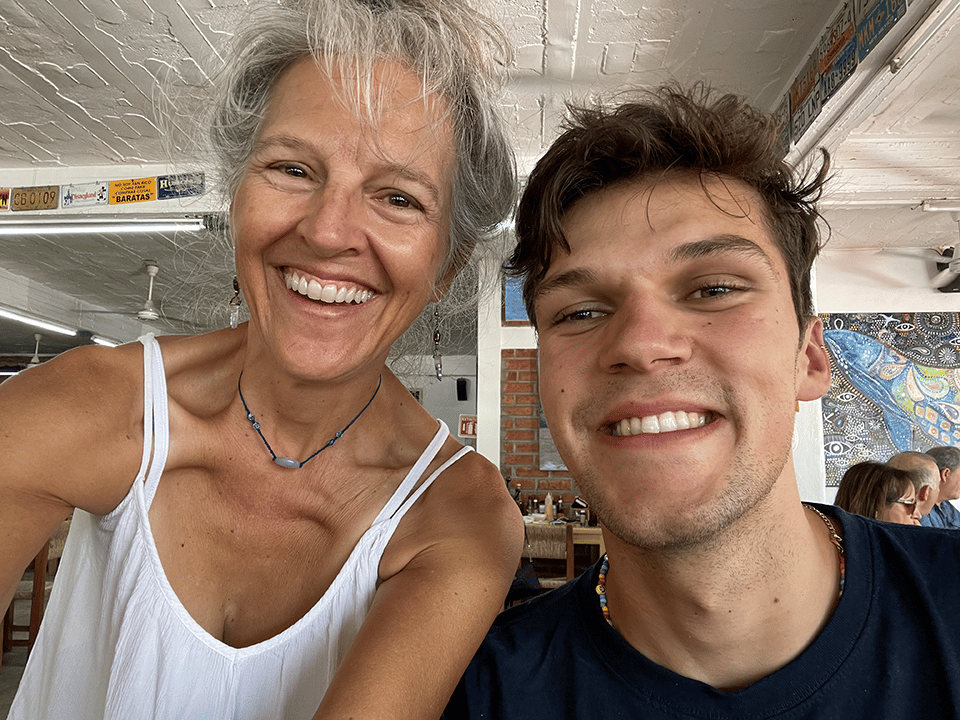
Shortly after our return to PV, we had a wonderful visit from our 20-something y.o. Swedish family friend, Jacob. Jacob’s mom, Magdalena, and Heidi were assigned to be pen-pals back in their 8th grade English class in the 1970’s, and became fast friends. Through years of writing letters, then emails, then Facebook messenger and now Zoom, they have always remained in good friends. (And have only met one time, in Rome about 10 years ago.) Jacob grew up hearing about “Heidi and Captain Kirk living on their sailboat” his whole life… and as it turns out he was in Mexico, doing a semester abroad at a University in Guadalajara. So we invited him for a visit and he took the five-hour bus ride from GDL to PV. So much fun to meet him in person. Jacob was a delightful young man with such a great spirit of enthusiasm for life, and we were grateful that he made the time to visit us. Magdalena & Erik, you have raised a FINE son!
Annnnd…. That’s a wrap on cruising Costalegre, a beautiful, cheerful coast! After a week-long cruise from Barra de Navidad, we are very happy to be back in Puerto Vallarta again. If you’re wondering why we chose to live in Mexico, this article lists some of the reasons.
